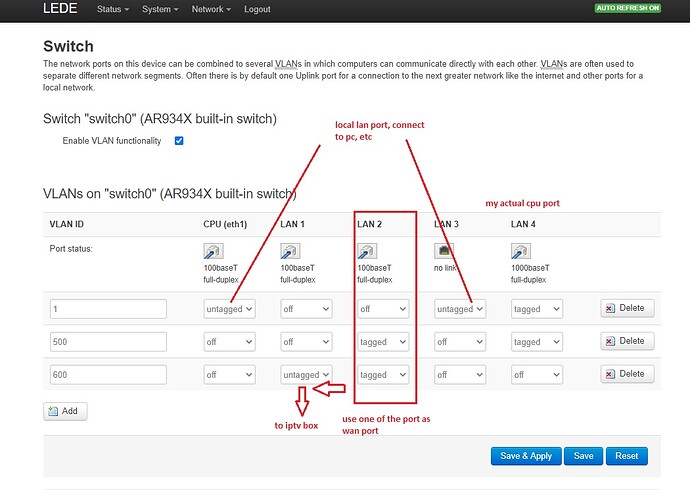Hello. Malaysian here.
About awhile back, I purchased a TP-Link AC1350 (Archer C60) as a replacement router in case the currently working router got fried in a power surge.
Then, I tried to use it, and to my surprise, the firmware was not compatible with the TMNet Unifi fibre-optic connection protocols. Despite what the box says, the hardware I actually got was instead for the US market. And I couldn't flash the firmware to the Malaysia compatible ones, as the hardware itself was different.
I gave up, and had to purchase a different one.
But I kept the C60 around.
Recently, I came across OpenWRT, and to my delight, there's a version for the C60, and there are site tutorials for configuring it to connect to Unifi. So, I flashed the firmware in, followed the instructions, and...
The internet connection didn't work.
I tried two different methods, but the screenshot of the OpenWRT looked different from the one I have.
Can anyone help me with this issue? The goal is to have the C60 able to access the internet directly through the fibre optic modem.
Here are screenshots of my configuration:
Despite the hardware having a WAN port and 4 LAN ports, I don't see an option of the WAN on the GUI.
Can anyone help?
Note: I'm a newbie at this. Very Green.



